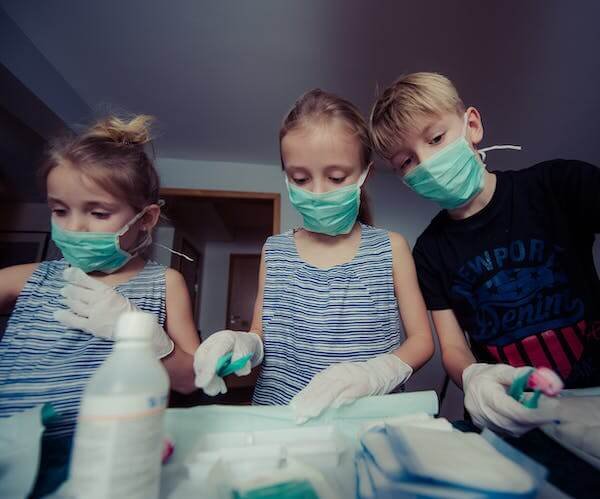Why A Lot of Californians with Insurance Avoid Hospitals in This County Because “It’s Just Too Much”

Bernie Medina drives from Salinas to San José, where she sees her oncologist, for an hour every three months. She need yearly examinations because she was diagnosed with uterine cancer two years ago. Although Medina is a resident of Monterey County, she is unable to use any local hospitals due to her health insurance.
Medina teaches in the Salinas Union High School District, as does her spouse Jeannie. They are covered by a local government health insurance programme designed to minimise costs for both businesses and employees ten years ago. It does so by excluding all hospitals in Monterey County and their affiliations. Getting emergency treatment and seeing specialists like Medina’s oncologist have gotten more challenging as the hospitals have absorbed neighbourhood urgent care facilities and doctor’s offices.
“I believe the community would likely be taken aback if they discovered that the educators and residents of our school districts were deprived of access to our medical facilities,” stated Jeannie Medina.
They reside in one of the most costly health care markets in California, where experts claim that a combination of factors including remote location and low market competition cause costs to rise at particularly high rates. Based on statistics gathered by the research think tank RAND, three hospitals in Monterey County—Community Hospital of the Monterey Peninsula, Natividad Medical Centre, and Mee Memorial Healthcare System—are among the top 10% of the state’s most expensive institutions.
Salinas Valley Health, a fourth hospital, is among the top 15% of hospitals with the highest costs. RAND data is gathered via employers’ voluntary disclosures, and it contains pricing details for approximately 90% of California’s hospitals.
Ivana Krajcinovic, an economist and vice president of a union health plan that serves county hotel workers, said that Montgomery “is the definition of a market failure.”
Despite conjuring up visions of immaculate beaches, upscale dining establishments, and tourist-oriented golf resorts, Monterey is unmistakably a working-class county. The county’s two main industries are agriculture and fishing, with an average yearly pay of less than $58,000.
Locals and labour activists said that the Central Coast is experiencing a “affordability crisis” due to the hospitals’ exorbitant costs. They claimed that the costs force others to travel long distances for surgery or childbirth, and they burden thousands of individuals with medical debt.
The state’s new Office of Health Care Affordability, a division established by a 2022 law meant to halt sharp price hikes, has received their concerns. However, the agreement lawmakers made with the industry to pass the bill restricts the office’s investigation to future price rises, giving Monterey County citizens little recourse against their current medical expenses.
Hospital executives blame insurers for Monterey County’s affordability woes and argue that the rates hospitals charge are the only way to stay in business at a time when one in five California hospitals is at risk of closure, according to a report commissioned by the California Hospital Association. Services that are necessary would be discontinued.
However, based on a comparison with Medicare billing rates, independent economists claimed Monterey hospitals have good profit margins and charge patients more than four times the amount required to break even.
Health economist Christopher Whaley, principal author of a RAND hospital price transparency research, said that while living expenses in Monterey are high, they are “not as expensive as San Francisco or Los Angeles, and you see higher prices in Monterey.”
Krajcinovic stated that Monterey is an anomaly even on a national level. For the UNITE HERE hospitality workers union, Krajcinovic is the administrator of UNITE HERE HEALTH, a nationwide insurance programme. Over 200,000 people nationwide have their medical expenditures covered by the health plan, and Monterey is by far the most expensive location in the network. Krajcinovic
According to the health plan’s hospital payment data, the average cost for a single night in a Monterey hospital was $12,300 in 2022. It was less than $7,000 in New York City and $3,500 in Chicago. According to Krajcinovic, the price just covers the cost of the hospital stay; it does not include the cost of the treatment.
Krajcinovic stated, “It would be better if we put people up at the Pebble Beach Lodge.”
Salinas families face difficult decisions
Bernie being able to use the hospital and treatment centre a few miles from the Medina family’s Salinas home would make a lot of things easier for them, according to Jeannie Medina.
The Medinas travelled over 60 miles north on New Year’s Eve 2021 to San José in order to undergo Bernie’s cancer surgery. Bernie lost strength and hair during the next six weeks, and Jeannie drove her to chemotherapy appointments, which were roughly 20 miles from their house. The chemotherapy centre was in Monterey County, but according to them, it was hard to discover one that wasn’t owned by one of the four hospitals.
Bernie was once misinformed by the treatment facility that her insurance would fund a procedure at the Community Hospital of the Monterey Peninsula to implant a chemotherapy port early in her treatment. According to Jeannie Medina, she left the treatment with a $25,000 debt.
Both of the Medinas said they wish they could use the local hospitals and be supported by loved ones and people they know.
“We can’t use the hospitals that some of our spouses work at, that our children and our aunts and our uncles work at,” Jeannie Medina said.
If the Medinas opted for an insurance plan that includes the local hospitals, they would pay an extra $3,000 per month in premiums, about $30,000 annually.
“It’s just too much,” Jeannie Medina said.
The Municipalities, Colleges, Schools Insurance Group is a local plan that provides insurance to government employees. About 10,500 people are enrolled in it, with 40% of them not include the local hospitals in the plan, according to group Executive Director Neddie Sarmiento. About 4,500 persons, mostly teachers, make up that number. Year after year, Sarmiento remarked, the number increases.
Patients without insurance who visit hospitals in an emergency are frequently responsible for paying the entire cost of their care.
Araceli Ruiz, a farmworker, and her spouse make every effort to avoid visiting the hospital. They are unable to take on extra debt due to their existing medical bills.
Ruiz was severely burned in a cooking accident in 2018 and was treated for $5,000 at Natividad Medical Centre. Ruiz sought emergency gallbladder surgery at Salinas Valley Health in 2020 after experiencing crippling stomach pain. She claimed she thought she would pass away at home without access to medical treatment, but she was afraid of dying by herself in a hospital that was overrun with COVID-19 patients.
She added that she now owed $17,000 to the hospitals. Ruiz and her husband are only able to meet their minimum necessities, she added, and are forced to choose between paying their medical costs and their rent and groceries.
Hospitals in Monterey defend expenses
CEOs of nearby hospitals retaliated against anyone who criticised their fees, claiming that lowering them would undermine their capacity to make ends meet and endanger the provision of healthcare in the area.
It would be foolish to discount our rates to the point where our local hospital’s long-term existence is threatened. It would be managerial malpractice to acquiesce to charges that would lead to widespread layoffs or the elimination of essential services, according to a statement from Matt Morgan, vice president and chief financial officer of Montage Health, the organisation that owns Community Hospital of the Monterey Peninsula.
Morgan cited two financially troubled hospitals in nearby counties as instances of less expensive hospitals that were unable to continue operating. Watsonville Community Hospital in Santa Cruz County and Hazel Hawkins Memorial Hospital in San Benito County both filed for bankruptcy in May of 2022 following years of financial difficulties.
A survey released by the industry organisation California Hospital Association states that over half of the state’s hospitals are currently losing money. After Madera Community Hospital in the San Joaquin Valley closed a year earlier, lawmakers realised that hospital closures were a serious possibility and established a $300 million rescue credit fund for financially troubled institutions.
The Monterey County-managed Natividad Medical Centre in Salinas likewise stated in an unsigned statement to CalMatters that it would be “irresponsible for the hospital to operate at a loss.” According to the statement, cutting commercial prices would put services in jeopardy and cause “significant annual deficits.”
The statement stated, “We need adequate reimbursement for Natividad’s essential services to continue.” “We must continue to be a thriving, reachable, and fully functional community.”
Several efforts for information from the publicly-run district hospital Salinas Valley Health went unanswered. Moreover, county representatives declined to comment on record.
Mee Memorial Healthcare System, a private hospital on the southern edge of the county, did not respond to requests for comment by the deadline. Mee Memorial has faced immense financial difficulties in recent years but posted significant profits in 2022.
Krajcinovic, with UNITE HERE HEALTH, said it’s shocking that the county’s taxpayer-supported hospitals, Natividad Medical Center and Salinas Valley Health, charge the same prices as the private hospitals.
“Frankly, how is a county hospital doing this?” she said.
Morgan, who works at Community Hospital of the Monterey Peninsula, also accused insurance companies of charging exorbitant fees to customers. According to his remark, the hospital has maintained price hikes below 5% each year for the previous five years.
However, the industry organisation for insurers, the California Association of Health Plans, asserts that premium hikes are directly related to hospital costs. According to spokeswoman Mary Ellen Grant, hospital spending makes up the single-largest portion of health care costs—37 percent.
According to Grant, “hospital costs and prescription drug costs are the best two examples of ever-increasing costs.”
Four times higher than Medicare rates
Hospitals, especially those in Monterey County, frequently claim that Medicare and other public insurance programmes don’t provide enough funding to cover their costs. Hospitals claim they have to charge private insurers extra to make up the difference when they treat a large number of patients who have public insurance, such as Medicare or Medi-Cal, the state’s insurance programme for Californians with extremely low incomes.
63% of Medi-Cal patients are served by the county-run Natividad, according to state data. The Monterey Peninsula’s Community Hospital treats the fewest patients (18%), but the greatest percentage of Medicare patients (46%).
RAND economist Whaley said research proves the hospital argument to be only partially true: Relatively efficient hospitals operate near Medicare rates. It isn’t quite enough to pay all the bills, but reimbursement isn’t so inadequate that private insurance needs to make up five times the difference. Medicare rates are also calculated regionally to account for local cost of living and labor expenses.
The RAND data shows Monterey hospitals routinely charge more than four to five times the Medicare rate.
“It’s generally accepted that (Medicare) covers 80–85% of their expenses,” stated Patrick Pine, the head of a California insurance programme that assists farmworkers. “How can a hospital charge Medicare three, four, five, or six times or more?”
What then is going on in Monterey County? Glenn Melnick, a professor at USC’s Sol Price School of Public Policy and an expert in health economics, put it simply: there isn’t enough competition.
Melnick declared, “There isn’t enough competition to make it work.” Prices increase in proportion to their surroundings. Why would I give you a discount if I’m one of these… hospitals?
Health policies save costs when travelling.
After decades of enduring exorbitant hospital costs, labour advocates in the area said they are now looking to the state for solutions.
Public comment at Office of Health Care Affordability board meetings in Sacramento has been replete with tales from working-class Monterey locals who have been slapped with outrageous medical bills, harassed by collections officers, and forced to file for bankruptcy for months.
Every month, Salinas Valley Federation of Teachers President Kati Bassler makes the trip to the meetings to tell the tales of her union members’ financial hardships in accessing healthcare. According to her, over 70% of the union’s teachers are enrolled in the health plan that does not cover hospitals in Monterey County.
“They engage in predatory behaviour,” she declared. They have been creating monopoly-like procedures. They are not restrained.
Pine has also begun to provide information and anecdotes with the state board as the chief administrative officer of the Robert F. Kennedy Farm Workers Medical Plan, which provides insurance to roughly 7,000 members of the United Farm Workers union.
Similar to the UNITE HERE HEALTH fund, the Robert F. Kennedy Farm Workers Medical Plan offers its members direct payment for medical expenses and visibility into hospital rates. This degree of transparency is uncommon in most employer-sponsored health plans, which often rely on health insurance companies to facilitate transactions. Hospital and health insurance negotiating pricing are typically closely-kept trade secrets.
Salinas Valley Health charged more than $420,000 to treat a farmworker’s parasitic infection, according to a United Farm Workers analysis of billing codes, while Watsonville Community Hospital, located in Santa Cruz County, 25 miles to the north, charged about $126,000 for the same treatment over the same number of days, according to Pine. According to Pine, that is more than three times as costly and is typical.
By covering the housing and transportation costs for Monterey County residents undergoing treatments in neighbouring counties, the plan has been able to save money.
The most expensive health care market in the state is along the California coast, from Santa Barbara to about Marin County, according to Pine. “Even among the most expensive, Montagey is an exception.”
The new state agency might not have much power. Although the law that established the Office of Health Care Affordability limits its capacity to prevent future price increases, officials are still able to perform market analyses.
The office’s head, Elizabeth Landsberg, of the state department of Health Care Access and Information, declined to comment.
Proponents expressed confidence that drawing attention to the matter at board meetings will compel hospitals to reduce costs. The Community Hospital of the Monterey Peninsula is run by Montage Health, which released $40 million in medical debt for 29,000 patients who visited the facility between 2020 and 2022, the week before Christmas.
By making this public, we hope that the hospitals would reconsider and decide that 200% of Medicare is sufficient. Let’s take twice as much as a hospital genuinely needs to run,” Krajcinovic declared. “Highway robbery accounts for 50%.”






